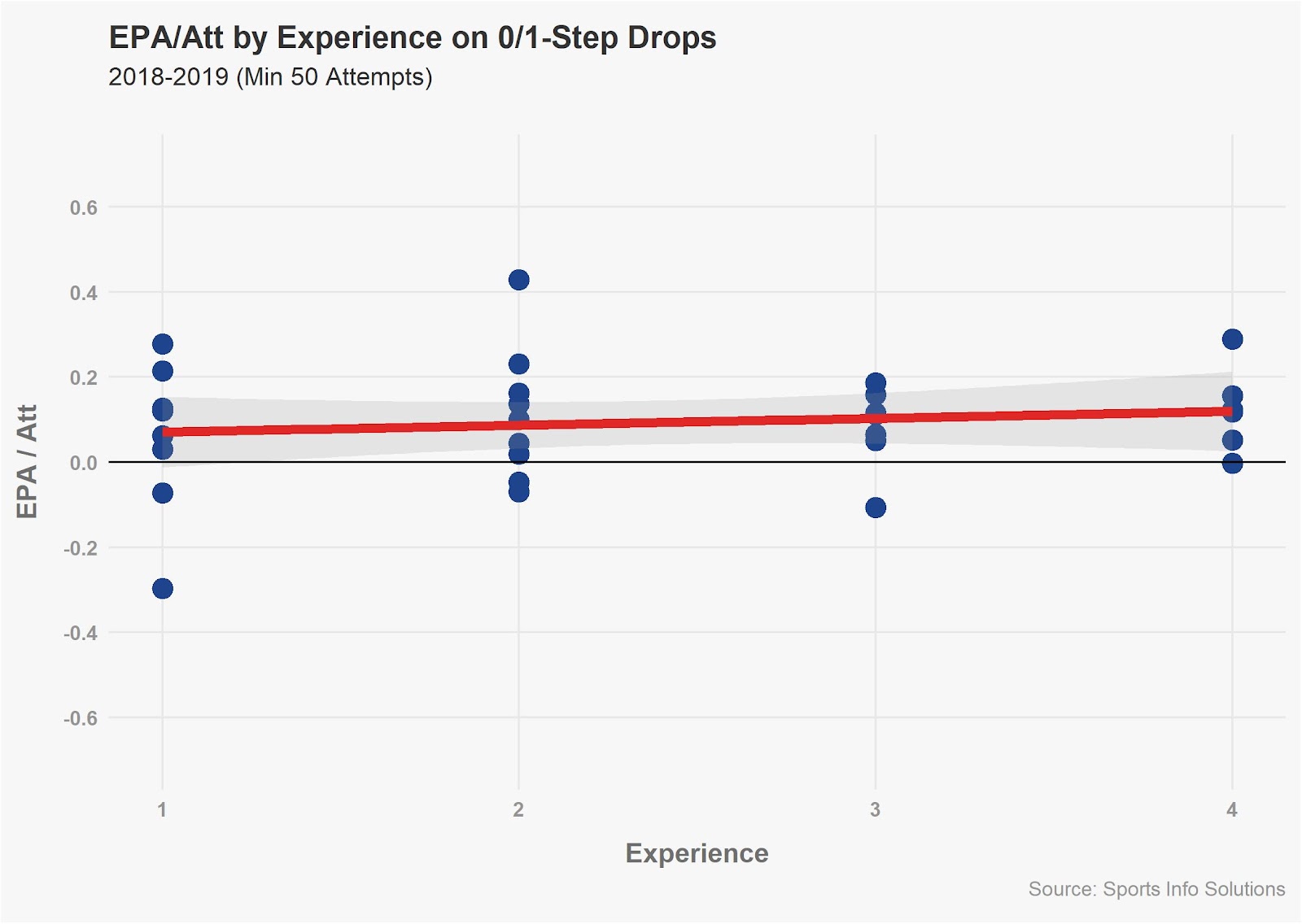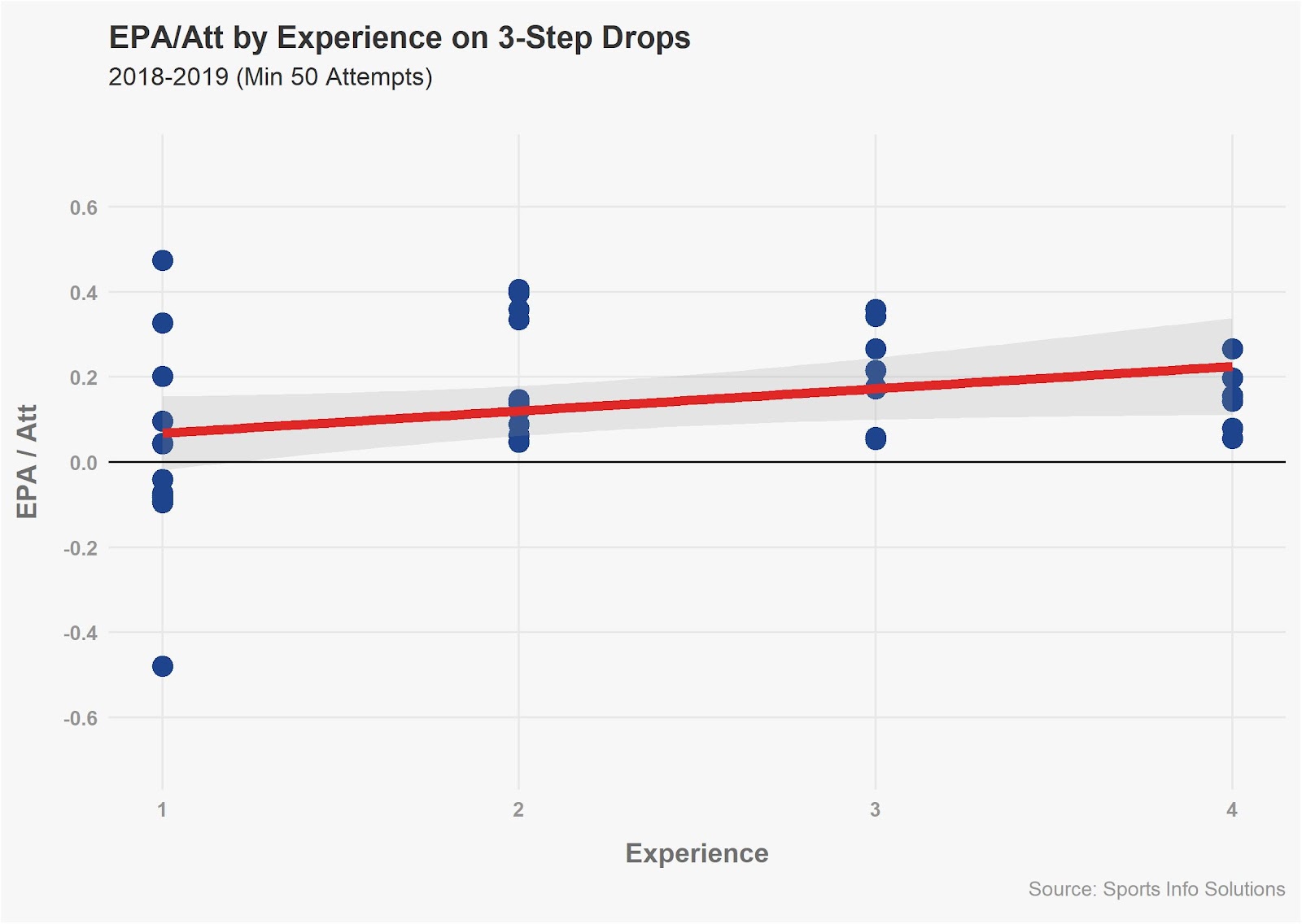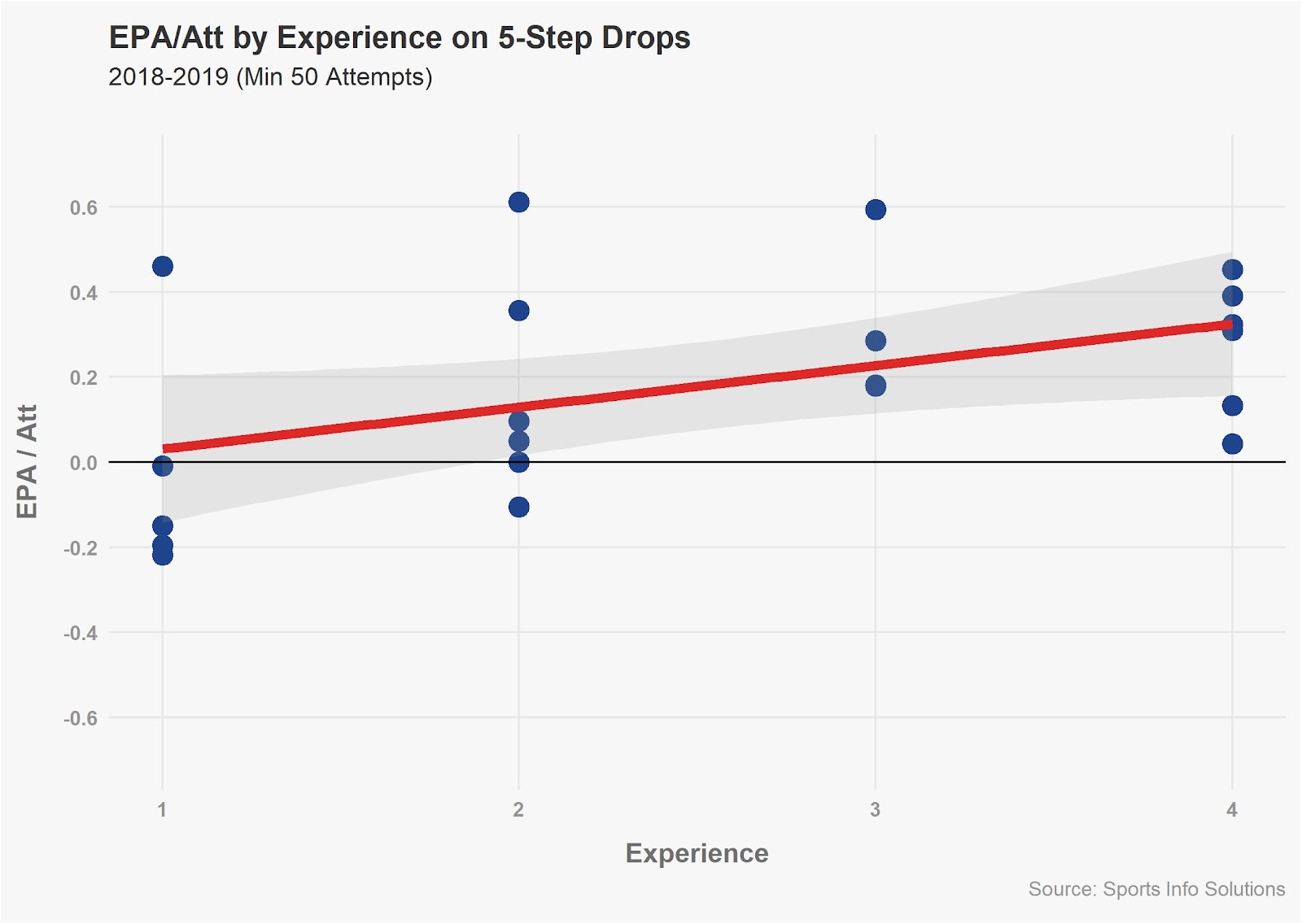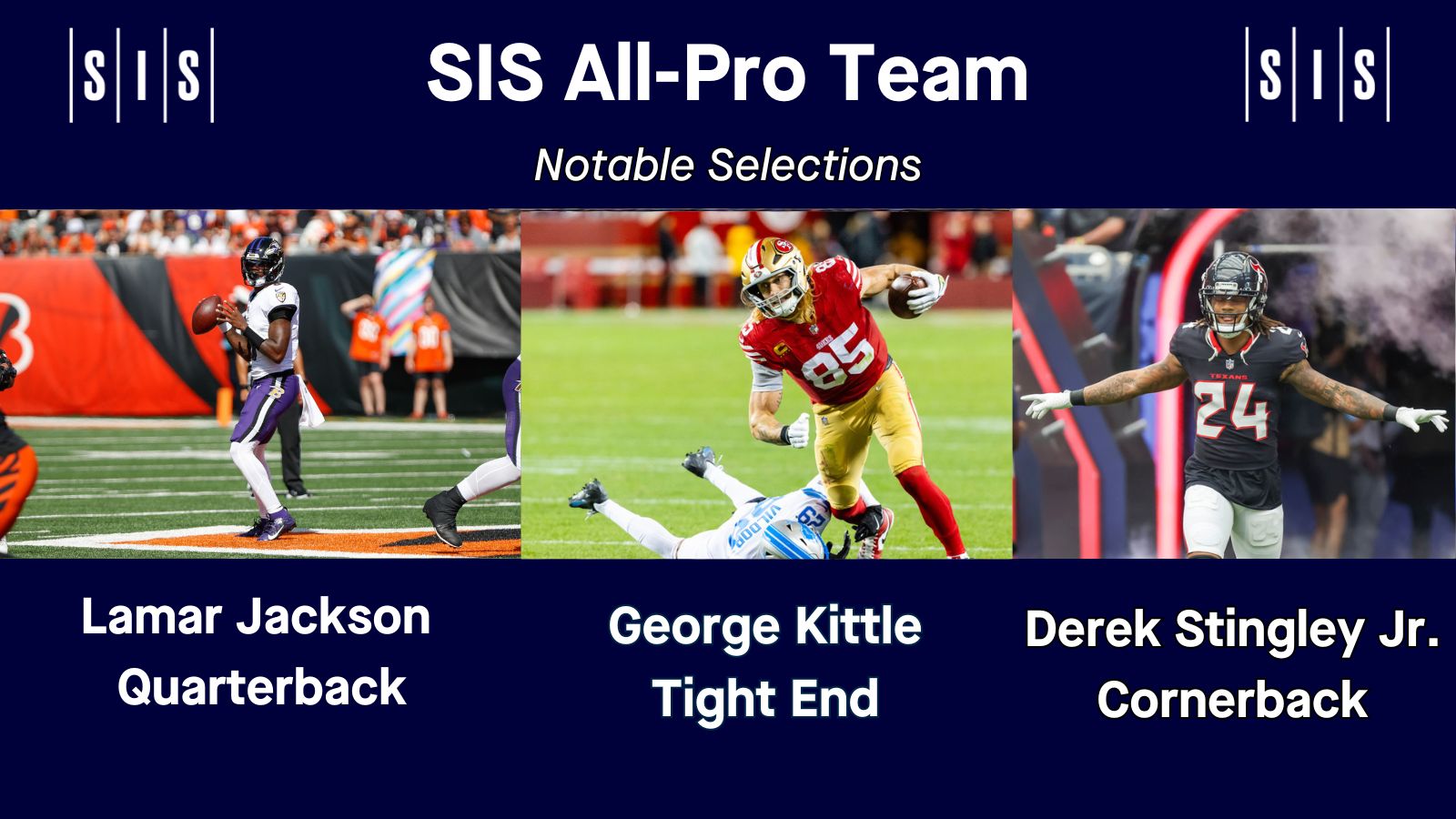By JOHN SHIRLEY
Earlier this month Dan Pizzuta of Sharp Football Analysis posted an interesting finding concerning Giants quarterback Daniel Jones’ performance based on dropback type to Twitter. The crux of the finding was that Jones performed at an above-average rate when using only a 0/1-Step Drop and generally having fewer reads on a given play. But with longer drops and more time to process and read the field, Jones’ performance significantly faltered.
This finding led to us wondering if this was a unique instance of a rookie struggling with more reads, or if there is a relationship between experience and dropback types.
If a relationship were to exist, the theory would be that experience impacts longer dropbacks more than shorter ones. A 0/1-Step Drop with limited reads on the play should be a similar throw for a rookie or a seasoned veteran, while a 5-Step Drop would involve more processing and reads and therefore have a stronger relationship to experience.
Based on exploratory analysis, there is evidence of this theory being true among quarterbacks within their first four seasons.

In the above graphic, experience shows a weak relationship with EPA/Att on 0/1-Step Drops, with a correlation of 0.13. This follows the theory that these throws are similar for most quarterbacks and generally don’t require much experience for high-level performance. One of the more extreme outliers within our dataset is Josh Rosen’s rookie season of -0.30 EPA/Att, which is shown as the dot furthest towards the bottom left of the graphic.

On 3-Step Drops, we see a slightly stronger relationship between experience and EPA/Att, with a correlation of 0.31. The above graphic also shows a noticeable trend of rookies quarterbacks having a much wider variance in their performance on these throws. The range for rookie quarterbacks spans from Ryan Finley’s -0.48 EPA/Att to Lamar Jackson’s +0.47 EPA/Att.

5-Step Drops are where experience matters the most for quarterback performance, with a correlation of 0.46. There is also the noticeable trend of every quarterback in years three and four having a positive EPA/Att on these throws, while only a single rookie quarterback had a positive EPA/Att. Gardner Minshew, with his +0.46 EPA/Att, was that sole rookie quarterback, though, Kyler Murray would have joined him had he met the minimum attempts threshold, with an EPA/Att of +0.17.
This analysis shows a trend of experience being a larger factor in quarterback performance on longer dropbacks. This supports the theory that these throws generally require more reads, which players can improve upon with more playing time. However, experience and more playing time does not show a relationship with quick drops, suggesting that players are unable to improve significantly on these throws over time.
These findings bode well for Jones, the subject of the original Twitter thread, who performed well on 0/1-Step Drops and struggled on longer dropbacks. Over the next few years, experience should help his performance more on 3-Step and 5-Step drops. All of this analysis comes with an important caveat of smaller sample sizes, but it has provided interesting insight and something for SIS to monitor moving forward.

